ipopba
By Jill Mislinski
The Philly Fed’s Manufacturing Business Outlook Survey is a monthly report for the Third Federal Reserve District, covers eastern Pennsylvania, southern New Jersey, and Delaware. While it focuses exclusively on business in this district, this regional survey gives a generally reliable clue as to the direction of the broader Chicago Fed’s National Activity Index.
The latest Manufacturing Index came in at -12.3, down 9.0 from last month’s -3.3. The 3-month moving average came in at -4.3, down from last month. Since this is a diffusion index, negative readings indicate contraction, positive ones indicate expansion. The Six-Month Outlook came in at -18.6, down from the previous month’s -6.8.
The -12.3 headline number came in below the -2.5 forecast at Investing.com.
Here is the introduction from the survey:
Manufacturing activity in the region declined overall in July, according to the firms responding to this month’s Manufacturing Business Outlook Survey. The survey’s indicators for current general activity and new orders declined further into negative territory. The shipments index was positive and rose slightly, while the indexes for inventories and unfilled orders were negative. The employment indicators declined but remained positive. Both price indexes fell but remain elevated. The future indicators suggest that firms expect overall declines in activity and new orders but increases in shipments and employment over the next six months. (Full Report)
The first chart below gives us a look at this diffusion index since 2000, which shows us how it has behaved in proximity to the two 21st century recessions. The red dots show the indicator itself, which is quite noisy, and the 3-month moving average, which is more useful as an indicator of coincident economic activity. We can see periods of contraction in 2011, 2012, and 2015, and a shallower contraction in 2013. The contraction due to COVID-19 is clear in 2020.
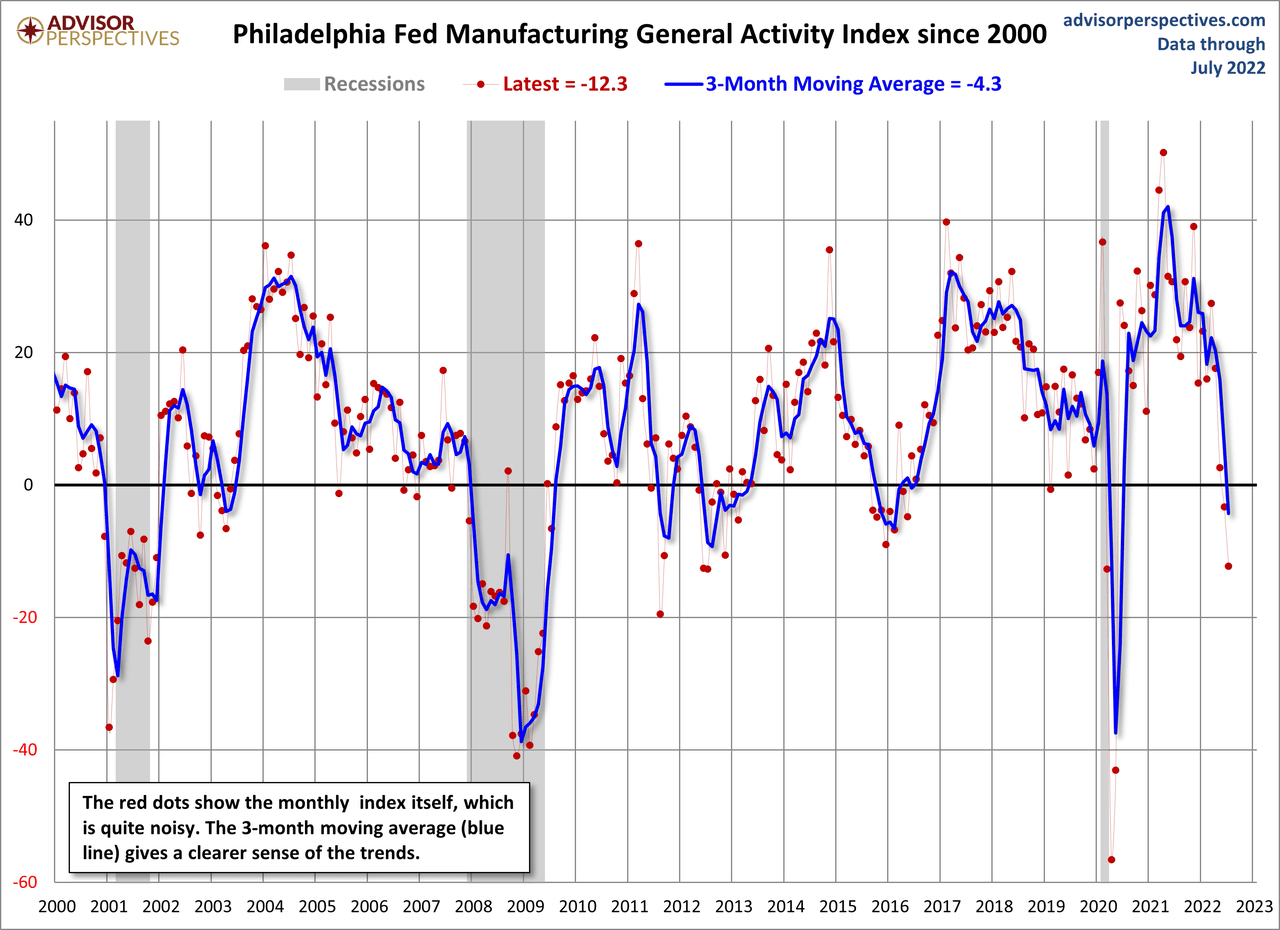
In the next chart, we see the complete series, which dates from May 1960. For proof of the high volatility of the headline indicator, note that the average absolute monthly change across this data series is 8.0.
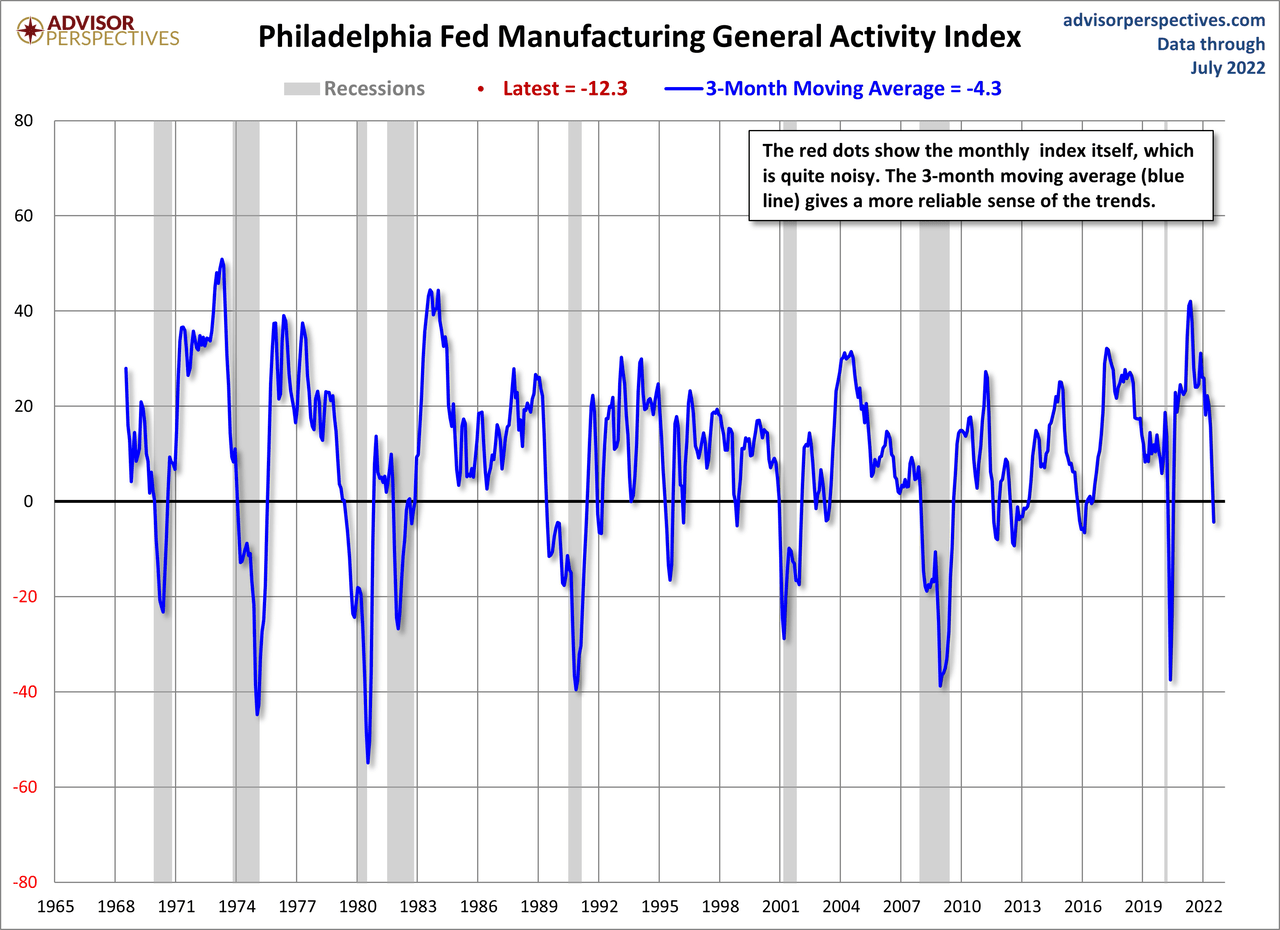
The next chart is an overlay of the General Activity Index and the Future General Activity Index – the outlook six months ahead.
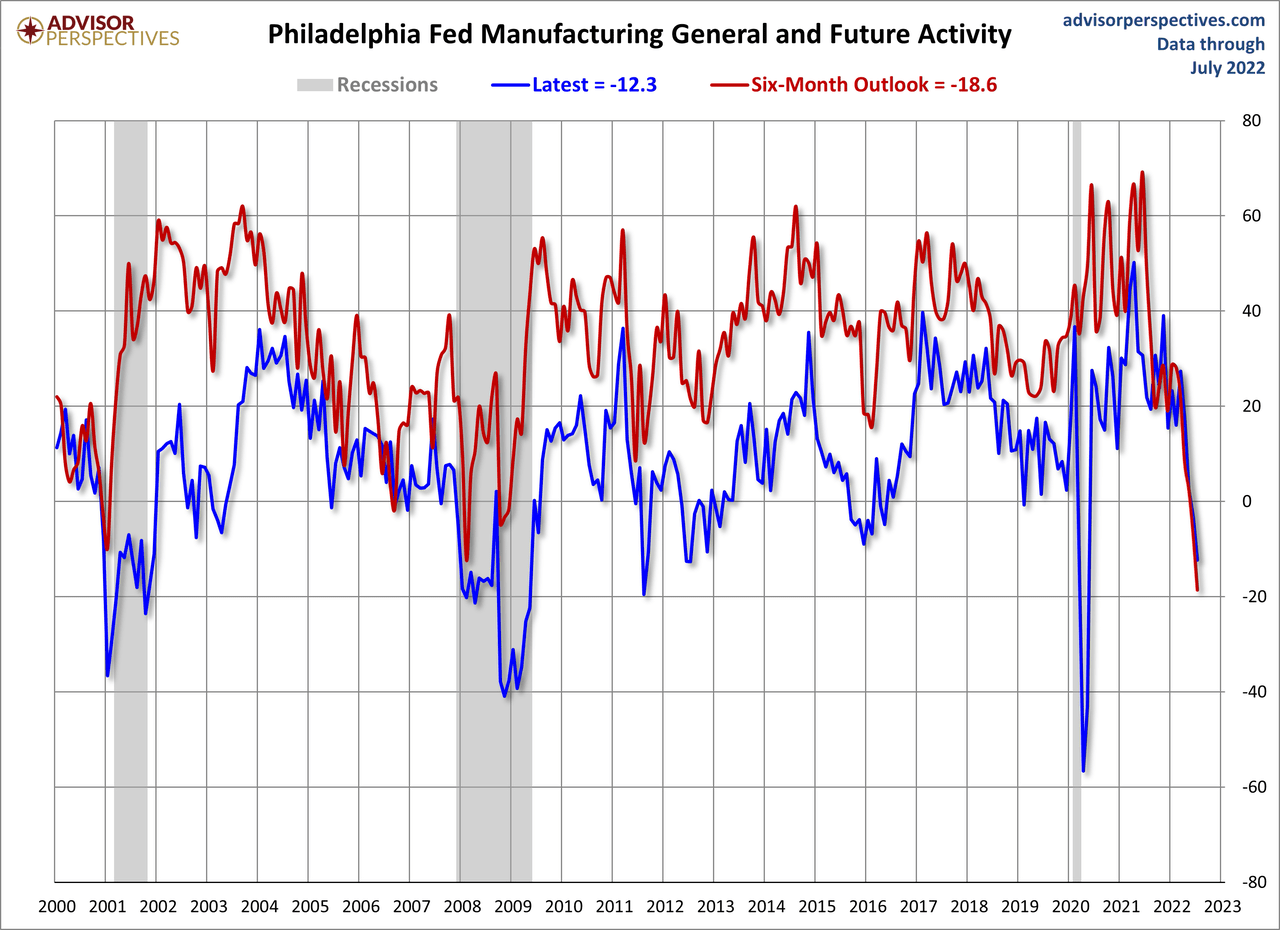
For comparison, here is the latest ISM Manufacturing survey.
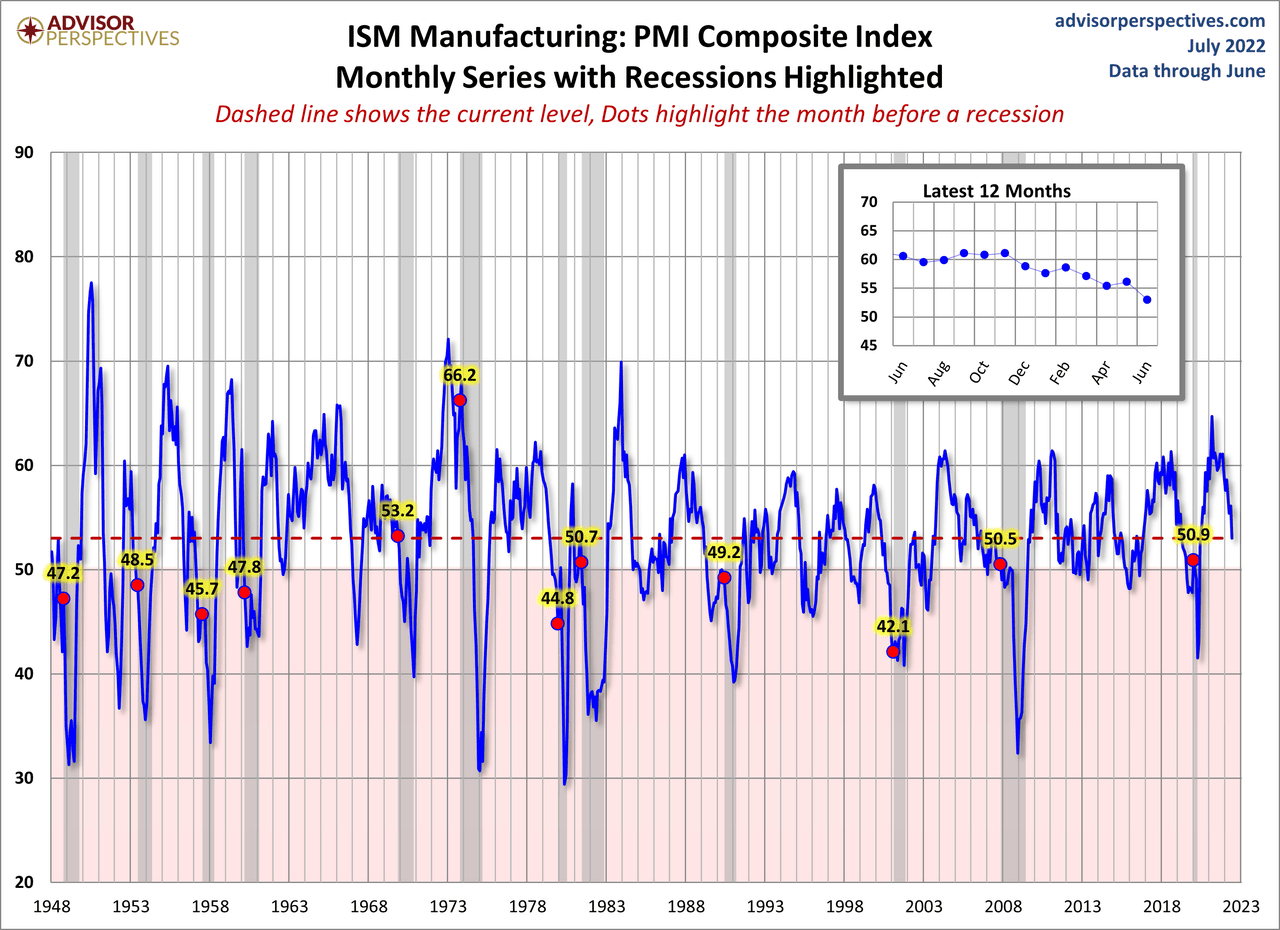
Let’s compare all five Regional Manufacturing indicators. Here is a three-month moving average overlay of each since 2001 (for those with data).
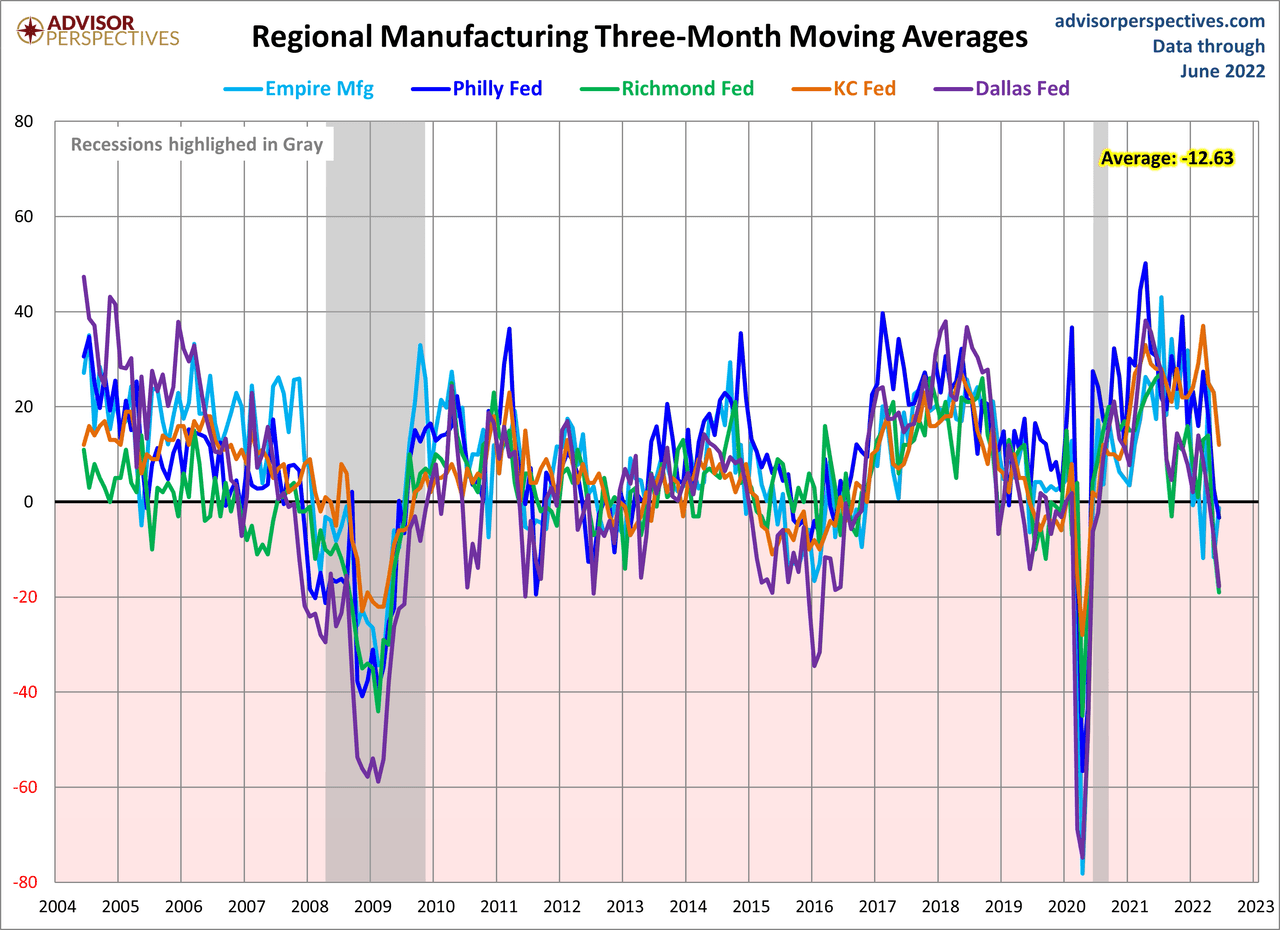
Here is the same chart, including the average of the five. Readers will notice the range in expansion and contraction between all regions.
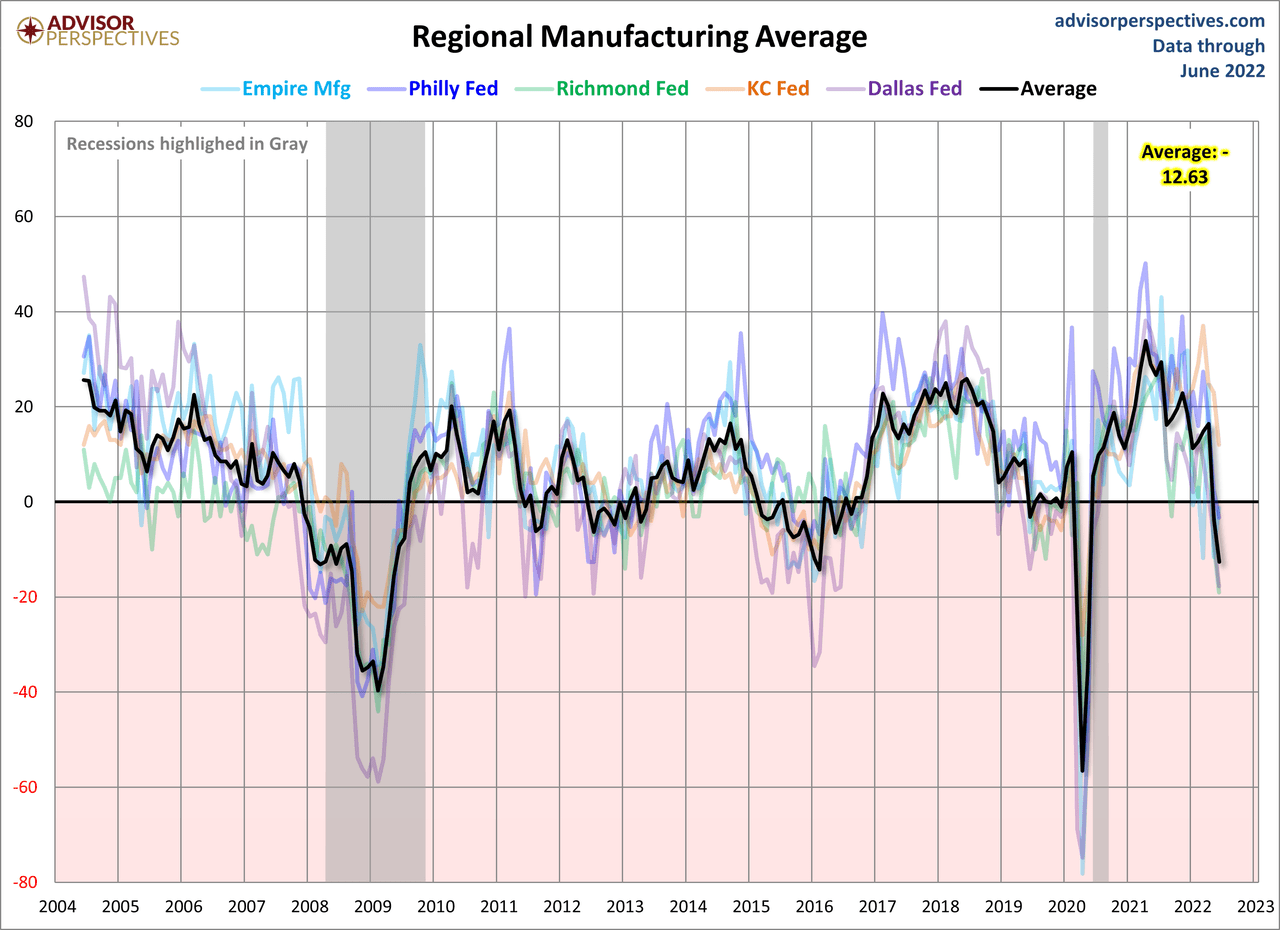
Editor’s Note: The summary bullets for this article were chosen by Seeking Alpha editors.


Be the first to comment